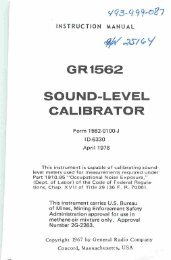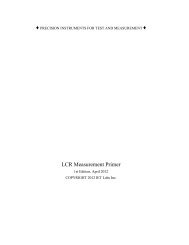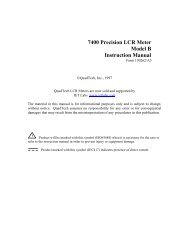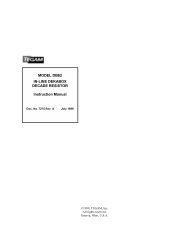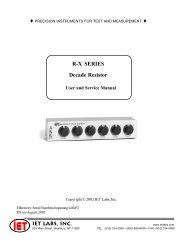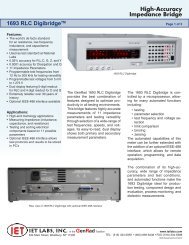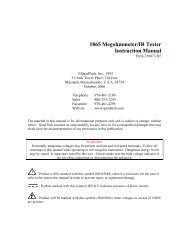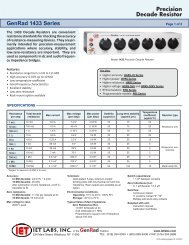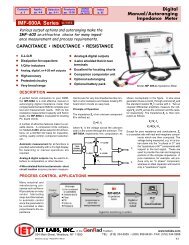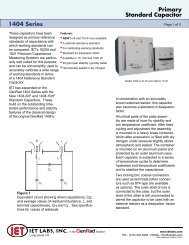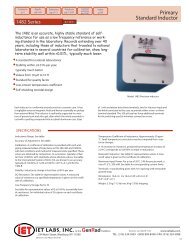Handbook of High Speed Photography - IET Labs, Inc.
Handbook of High Speed Photography - IET Labs, Inc.
Handbook of High Speed Photography - IET Labs, Inc.
You also want an ePaper? Increase the reach of your titles
YUMPU automatically turns print PDFs into web optimized ePapers that Google loves.
the relative position <strong>of</strong> these markers can <strong>of</strong>ten be discerned in a<br />
photograph that would otherwise be useless.<br />
When it is necessary to remove the stroboscope reflector in<br />
order to illuminate hard-to-reach spots, the drop in light concentration<br />
<strong>of</strong>ten is a problem. Ordinary household aluminum foil, when carefully<br />
smoothed on a flat surface and attached to one side <strong>of</strong> the flash lamp<br />
with clear cement, serves as a miniature reflector to minimize this re<br />
duction. Be sure the flash lamp is clean and the brightest side <strong>of</strong> the<br />
foil is placed toward the inside <strong>of</strong> the lamp. Best results are usually<br />
obtained when the foil covers about half <strong>of</strong> the lamp between the two<br />
spark electrodes, as shown in Figure 4-6;<br />
Figure 4-6.<br />
Application <strong>of</strong> an auxiliary<br />
reflector to the Strobotron.<br />
4.6 SHADOWGRAPH PHOTOGRAPHY WITH A SCOTCHLITE SCREEN.<br />
Shadowgraph photography is a technique used to study intense<br />
shock waves and fluid disturbances. Dr. Harold Edgerton has described<br />
a technique for taking such photographs using a Scotchlite screen as a<br />
reflective backdrop. For good definition with this method, an intense<br />
point light source must be located as close to the camera lens as pos<br />
sible. The Strobotac is ideally suited for this application since the<br />
Strobotron spark discharge gap closely approximates a point light<br />
source when directed as shown in Figure 4-7. Because <strong>of</strong> this, the<br />
light output can be concentrated optically into a high-intensity beam<br />
for special applications.<br />
The bare Strobotron lamp is positioned next to and slightly be<br />
hind the camera lens as shown in Figure 4-8, so that light is reflected<br />
from the screen back through the subject plane and onto the film.<br />
34




